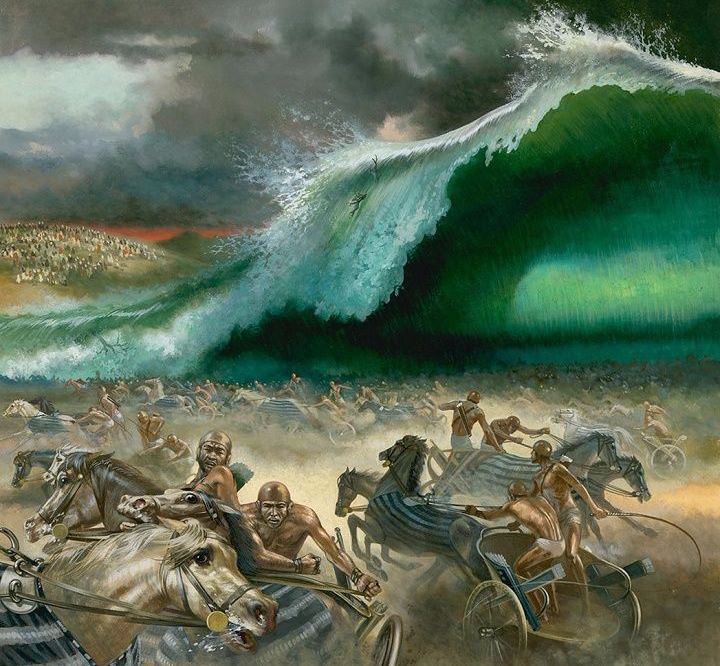The Nature of Nature

One of the most pervasive ideas that emerged from the Darwinian revolution and that still continues to influence the consciousness of man, is the belief that nature is fundamentally a struggle for existence, a survival of the fittest. Most of us accept this explanation of the workings of the natural world without ever considering its origins, its influence in shaping our worldview, or its evidential support.
We are taught from our earliest youth that nature is competitive. And we conjure up the image of the lion in pursuit of its prey as evidence to support our belief. But where did this concept of the survival of the fittest come from anyway? And should we hold that nature is fundamentally competitive?
Before the 19th century most biologists and naturalists believed that the natural world with all of its diversity of living organisms exemplified harmony and cooperation, not competition. So what caused this paradigm shift? Many individuals were involved, but perhaps one of the most important was an English clergyman by the name of Thomas Robert Malthus. Malthus wrote an essay in 1798 entitled “An Essay on the Principle of Population” which in retrospect, turned out to be highly influential and yet quite controversial. The essence of his worldview was misery—poverty, scarcity, starvation, disease and premature death. His model for understanding the natural world was based on the following notion—since human populations grow unchecked at a geometric rate of increase (1, 2, 4, 8, 16…) and food supplies grow only at an arithmetic rate of increase (1, 2, 3, 4, 5…), the inevitable outcome, as the population outstripped the food supply, would be constant struggle leading to starvation, disease and death. Whether or not these assumptions operate in any consistent manner within human societies is a complex question on its own and in need of deeper investigation; however, and this is the main point, Malthus incorrectly assumed that the same dynamic happens in the natural world, i.e. in the animal and plant kingdoms.
Charles Darwin considered Malthus’ essay one of the most important works he had ever read, and it became a cornerstone for his theory of natural selection, the basis for his belief in biological evolution. Darwin proposed that since organisms tend to reproduce at maximal rates at all times (or so he assumed), there would eventually be an unrelenting struggle for existence among organisms for a limited food supply. The strong, or fit, would win this struggle or competition for existence, and the weak, or unfit, would perish. In time, this idea of “survival of the fittest” became the standard lens through which most of us view the natural world.
Examples of competition, we are told, are readily apparent in practically every ecological interaction. But is this really true? Is the default interaction between living organisms characterized by competition?
When we take the time to objectively observe the natural world without preconceived biases, we discovered something fantastic. We discover that the most common form of interaction in the natural world is a mutualism, a relationship in which the interacting organisms or groups of organisms benefit. Definitive cases of competition (whether intra-species or inter-species) are rarely if at all observed in the wild. In fact, most classic textbook cases of competition have completely unraveled since they were first published and disseminated. As biologists took a closer look at these cases and gathered more accurate data, many subtle mechanisms were uncovered, originally undetected, operating in such a way as to avoid competition. Common strategies for avoiding competition include geographical isolation, food specialization, time division of a habitat, migration, dispersal mechanisms, territoriality, etc. In other words, competition is avoided or eliminated by dividing habitats into what we now call niches with each species having its own unique niche, a kind of “profession” unique to each species. Even the predator/prey relationship is best understood not as a competition but rather as a kind of balanced coexistence or dynamic equilibrium. In a wild population undisturbed by man, predators do not exterminate prey species. The predator species depends on the prey species as food while the prey species depends on the predator species to keep the living population virile and disease free.
Further, contrary to what many assumed for so long and contrary to one of the most important maxims of Malthus’ worldview, all living organisms are not trying to reproduce at maximal rates at all times. What ecologists have learned over the years from a careful study of the matter is that intrinsic biological control mechanisms exist to keep natural populations from outstripping their food and habitat resources. We will mention two examples by way of illustration. The first is a case brought up by Darwin himself. Of course, his main premise is that all organisms, including elephants, are striving to the utmost to increase their numbers. He writes, “The elephant is reckoned the slowest breeder of all known animals…it will be safest to assume that it begins breeding when 30 years old, and goes on breeding till 90 years old, bringing forth 6 young in the interval, and surviving till 100 years old…after a period of from 740 to 750 years there would be nearly 19 million elephants alive, descended from the first pair.” So why don’t we see the world teeming with elephants? According to Darwin, it is because they are subject to constant suffering and enormous destruction throughout their lives. However, when the biology was eventually studied in the wild (and not just theorized in someone’s head), ecologists arrived at a completely different conclusion. First, the age of reproductive maturity is quite plastic and is frequently deferred when conditions are not favorable. Second, female elephants do not continue bringing forth young to the age of 90, but stop somewhere around age 55. In other words, natural elephant populations are largely self-controlled by internal biological mechanisms. This phenomenon of reproductive maturity plasticity is very common and has been verified in many mammals.
Another fascinating case is how a plant imposes birth control on the herbivore that consumes it. Specifically, sagebrush controls the reproduction rate of the California quail that eat it. After a drought, the sagebrush develops high concentrations of plant estrogens that mimic reproductive hormones in the quail. These estrogens inhibit ovulation in the quail causing a sharp drop in the size of the quail population. Later, when the rains return, the concentration of these estrogens in the sagebrush drops precipitously and the quail population returns to normal as their reproduction rate bounces back. Truly fascinating, is it not?
Many examples like these exist in the natural world. The bottom line is that most species are not trying to reproduce at maximal rates all the time. Rather, they have built in mechanisms to monitor or sense the state of their environment in order to make adjustments to their reproductive rates. The result is that competition resulting from a population outstripping its food supply is effectively avoided.
Much more could be written about this topic, but this is sufficient for an introduction to the topic. Most of the evidence for how our ecological systems actually work was not known in the 1700s and 1800s. Without needing to explore other potential driving forces such as personal motivation for desiring a particular outcome from the outset, we can understand how Malthus, Darwin and others easily accepted erroneous ideas. But there is no excuse for us today. The data is available and open for all to investigate. We need to reevaluate nature in a new light. The way of the natural world is not survival of the fittest, dog eat dog, law of the jungle or as Alfred Lord Tennyson put it, “Nature, red in tooth and claw…” These descriptions are figments of man’s imagination. They are not accurate descriptions of the natural world. The natural world avoids competition as much as possible because it is inefficient, and it shuns fighting because it wastes energy. Many ecologists have been writing about this for years, but it’s been more convenient just to ignore them.
Generally speaking, we see in nature what we want to see. But the truth is that nature is not inherently competitive. It is quite cooperative and harmonious. If we are to be intellectually and emotionally honest with ourselves, as individuals, societies and nations, we can no longer honestly justify brutality and savagery by holding up nature as our example. If we continue to hold up nature as our teacher, we will have to change drastically our conduct and our behavior.






![Blood [is] Money](https://www.theshoemakerreport.com/wp-content/uploads/2025/02/doctor.healer-768x429.jpeg)